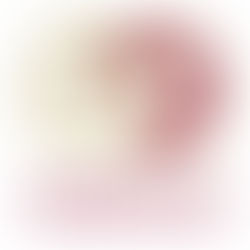Developing my own take on Oribe-ware ceramics
So, after looking at different styles of oribe ceramics I've decided to go for the 'Ao' oribe style which combines white with patches of green glazes and decorations in either black or oxide reds.
My very first step is to decide on the kind of clay I use. As my intentions are to hand-build quite large pieces, either figures or vases or platters, I needed something with plasticity and strength. At the same time I want the colour of the clay to go with the glazes. Thus, in order to limit the number of clay bodies I use I've decided to use Valentine's ES40 for it's great hand-building properties and combine it with some red terracotta clay in order to warm up the colour of the body. Only real drawback on this, I have to blend the two clays together instead of just getting it readymade out of the bag. Well, pottery isn't for lazy!


Next, I went on a hunt through books and websites to find some glazes which would work for me. As with all my work, I am not reproducing the traditional making processes but borrowing from them visually, d.h. I am looking for glazes that work while firing in oxidation in an electric kiln and not, as would be traditional, in reduction in a wood firing kiln. Also, instead of making umpteen test tiles I decided to combine testing with acquiring a new skill: throwing off the hump. These little test pots would also give me a much better idea of how the glazes behave on a three dimensional figure.



So, after testing four sets of tests where I adjusted the glaze recipes, the firing temperatures and underglaze decoration applications I found a combination that worked for me, at least on a small scale. Some results on the way were astonishing and even beautiful but not suited for my intentions. I wanted a satiny matt white glaze into which sit my soft black and red decorations which will be partially covered by a strong shiny green glaze.

I was astonished how much copper oxide I needed to add to the green glaze to get the desired green. 5% is really quite high and without the white glaze underneath it is much darker.

Now I was ready to mixed larger batches and apply my glazes to bigger pieces. I decided to start off with making two platters. What I realised very soon that, because I had decorations both on the top and bottom side of the platters, it made it very difficult to decorate and handle without damaging the glazes or decorations. First I would completely cover the whole platter with the white glaze. Next I would decorate the central underside section before turning over and decorating the top middle section. Finally I would dip and splash on the green glaze.


This glaze separates out very quickly and I wasn't happy with the glaze cover of the white glaze. I decided to brush on some more green glaze and add some detailing in red iron oxide while firing it at a slightly higher temperature. The result was a mixed bag: The white glaze goes quite transparent. The iron oxide is too strong on the unglazed areas obliterating the pattern underneath. Major drawback: the glaze developed pin holes. I think this is the clay. It doesn't like being re-fired at these high temperatures. However, on the plus side, I really like the halo effect around the black underglaze decorations in the green areas and the iron oxide on the white glaze.

Next, moving on to other shapes and forms: I also applied the same principle to some vases. Here, I enjoy the painterly effect and also the areas of exposed clay.

I decided to use the glazes in a very loose way on this large figure.

Maybe I'm moving quite a way away from the original Oribe inspire ceramics but I like the effects of the different glazes have on this figure with the interplay with my painted on patterns. It ads to their sensuality.

I like making these Oribe inspired ceramics and the results I'm getting. In future I may look at a way in which I can harden up the unfired white glaze surface to make it easier to handle. Currently the glazed surface is very powdery and comes off in my hands when handled, which is unavoidable. There are always ways of improving one's working practices....

















